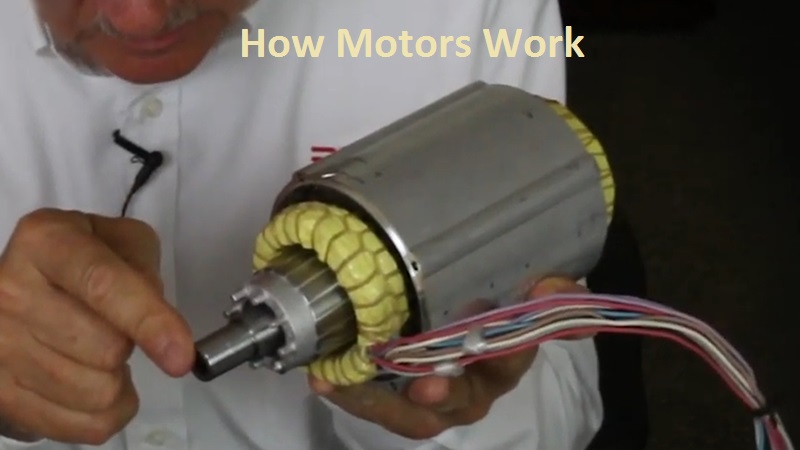
Often, conveyor “motor problems” are actually undiagnosed operational problems which have manifested themselves at the conveyor drive system. These include:
- overloaded belt
- mistrained belt
- plugged chute
- E-stop switch
- slipping belt
HOW MOTORS WORK (PART 2 OF 6)
This video explains how three-phase squirrel-cage AC induction motors work and provides the background to the company’s tutorial on how to troubleshoot Rulmeca Motorized Pulleys. Use this video in conjunction with our growing library of tutorials on how to design and maintain bulk handling belt conveyors.
If your belt conveyor motor is not working reliably, your conveyor drive system may be “underpowered.” How does a three phase AC electric motor work? Let’s examine a typical motor from our Model 113 LS motorized pulley to illustrate.
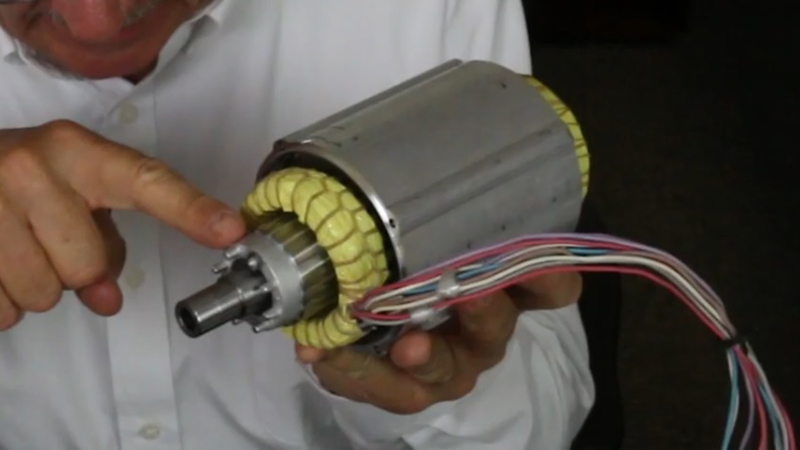
When electric current flows through the copper wire windings in the stator, it sets up a rotating magnetic field through the rotor. An induced electric current in the rotor reacts to the rotating magnetic field and produces a force on the rotor, which results in torque to turn the rotor shaft. This torque must be transferred from the rotor to the conveyor belt in order to move it.
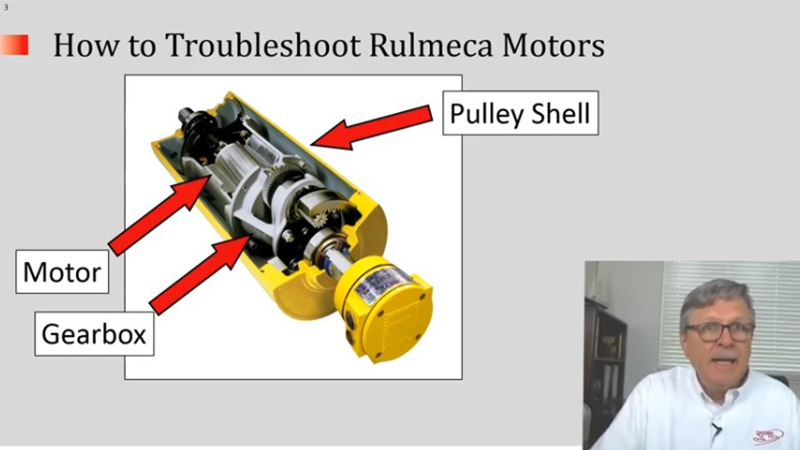
As you can see, the Rulmeca conveyor drive motor is directly coupled to a gearbox. That gearbox, through what we call the “end housing spur gear”, directly transmits the torque into the conveyor drive pulley shell.
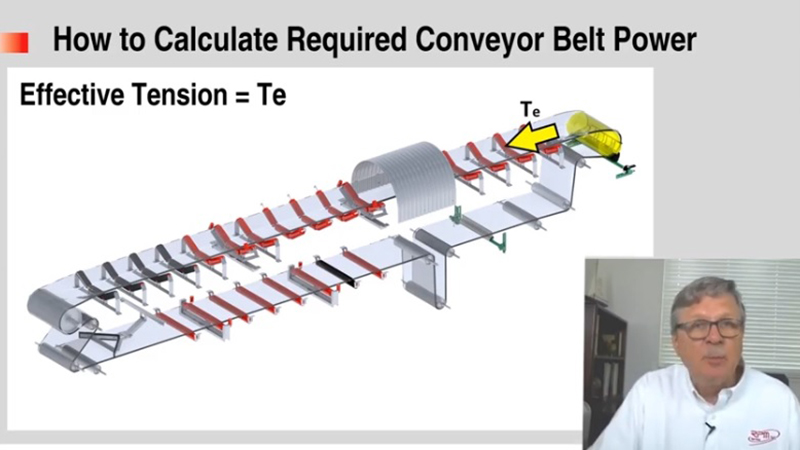
Since the conveyor belt wraps around the pulley shell, it pulls the conveyor belt through friction between the pulley surface and the bottom of the belt.
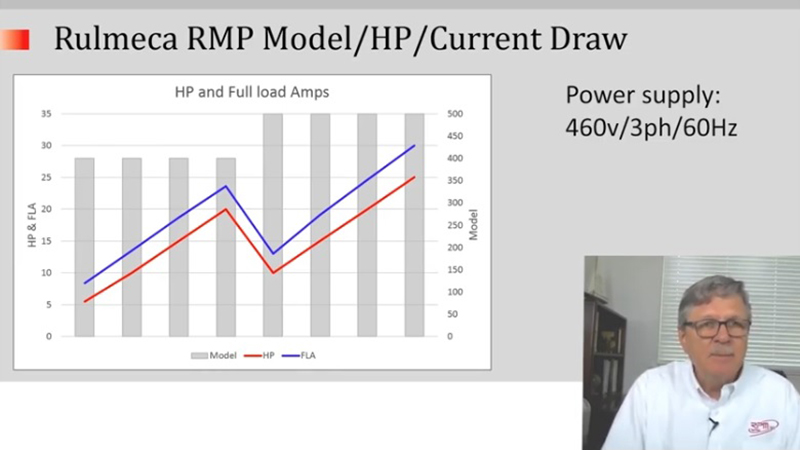
There’s a direct relationship between full load current and the horsepower of the motor, as you can see here. You must understand this relationship to diagnose why your motor may not be performing in an optimal way.
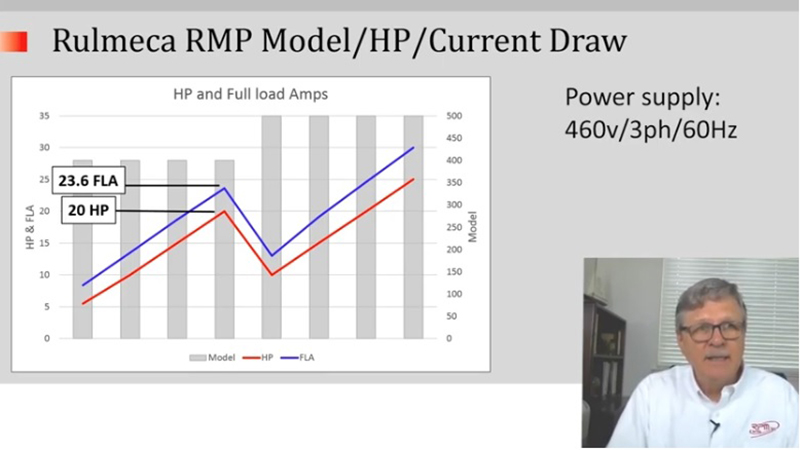
For example, a 20 horsepower Motorized Pulley has a full load amp draw of 23.6 amps. Note that four models of model 400 are shown on the left and four models of model 500 are shown on the right. Lower horsepower units are shown on the left and higher horsepower units are shown on the right.
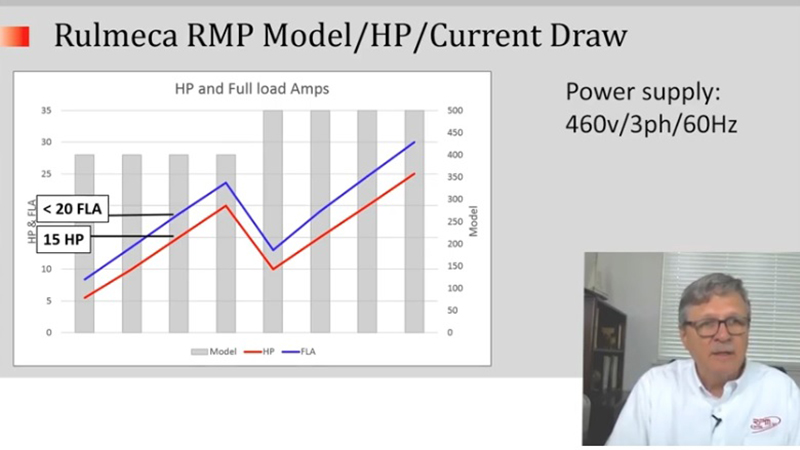
A 15 horsepower model 400, draws less than 20 full load amps. Note that a lower horsepower motors draw fewer amps at full load.
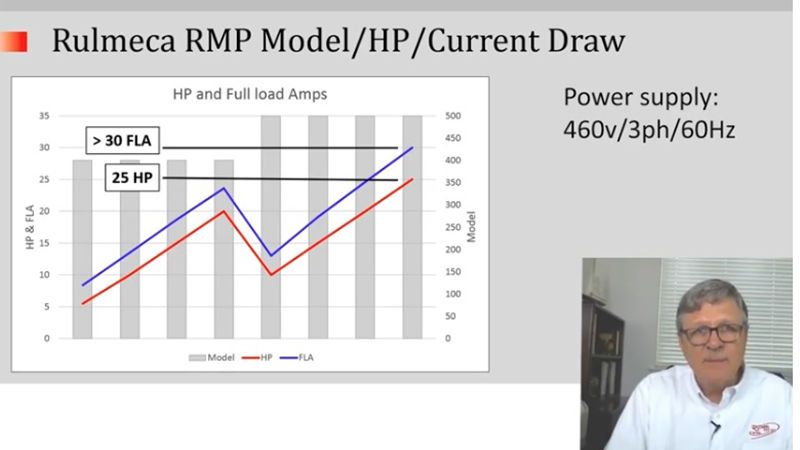
A 25 horsepower motor draws more than 30 full load amps.
Why do we need to pay attention to full load amps?
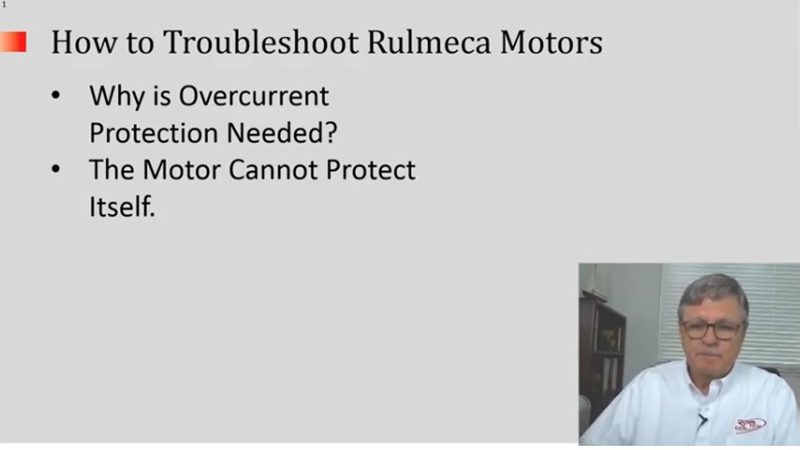
That’s because a three phase AC motor is not able to protect itself internally. Therefore, over current protection is needed. By design, all three phase AC motors will continually attempt to provide as much pull into the conveyor as required. They have no way of preventing themselves from self-destructing.
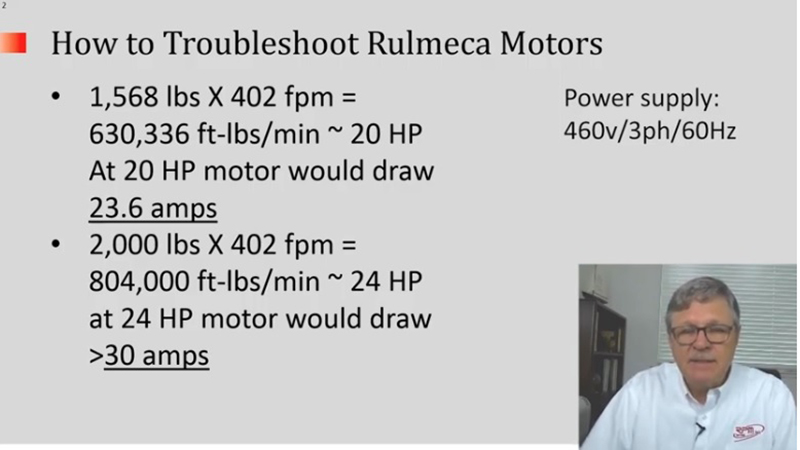
For example, in the conveyor drive system shown previously, a 20 horsepower Motorized Pulley would provide a belt pull of 1,568 pounds at a belt speed of 402 feet per minute. This is roughly equal to 20 horsepower, with a small derate for gear loss.
If operating conditions changed after the conveyor drive was designed and installed and the 20 HP motor was required to draw 2,000 pounds at 402 feet per minute, it would be attempting to provide 804,000 foot pounds per minute of power, which is approximately 24 HP. While doing this, the motor would attempt to draw 30 amps. The motor is not designed to continuously handle 30 amps because the lacquer, the wire gauge, the paper, etc, are all designed to run at a continuous full load amp of 23.6. Running continuously at 30 amps would overheat and damage the motor. That’s why over current protection is needed.
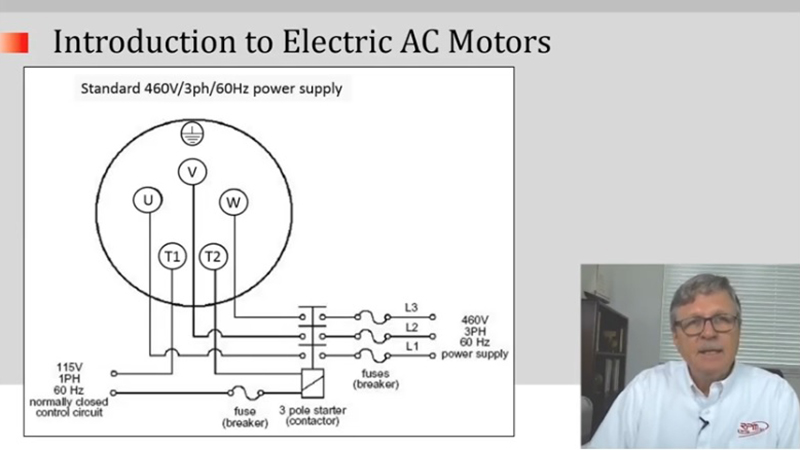
We hope you enjoyed this tutorial. For more informative tutorials, please subscribe to our YouTube channel. Thank you very much.
